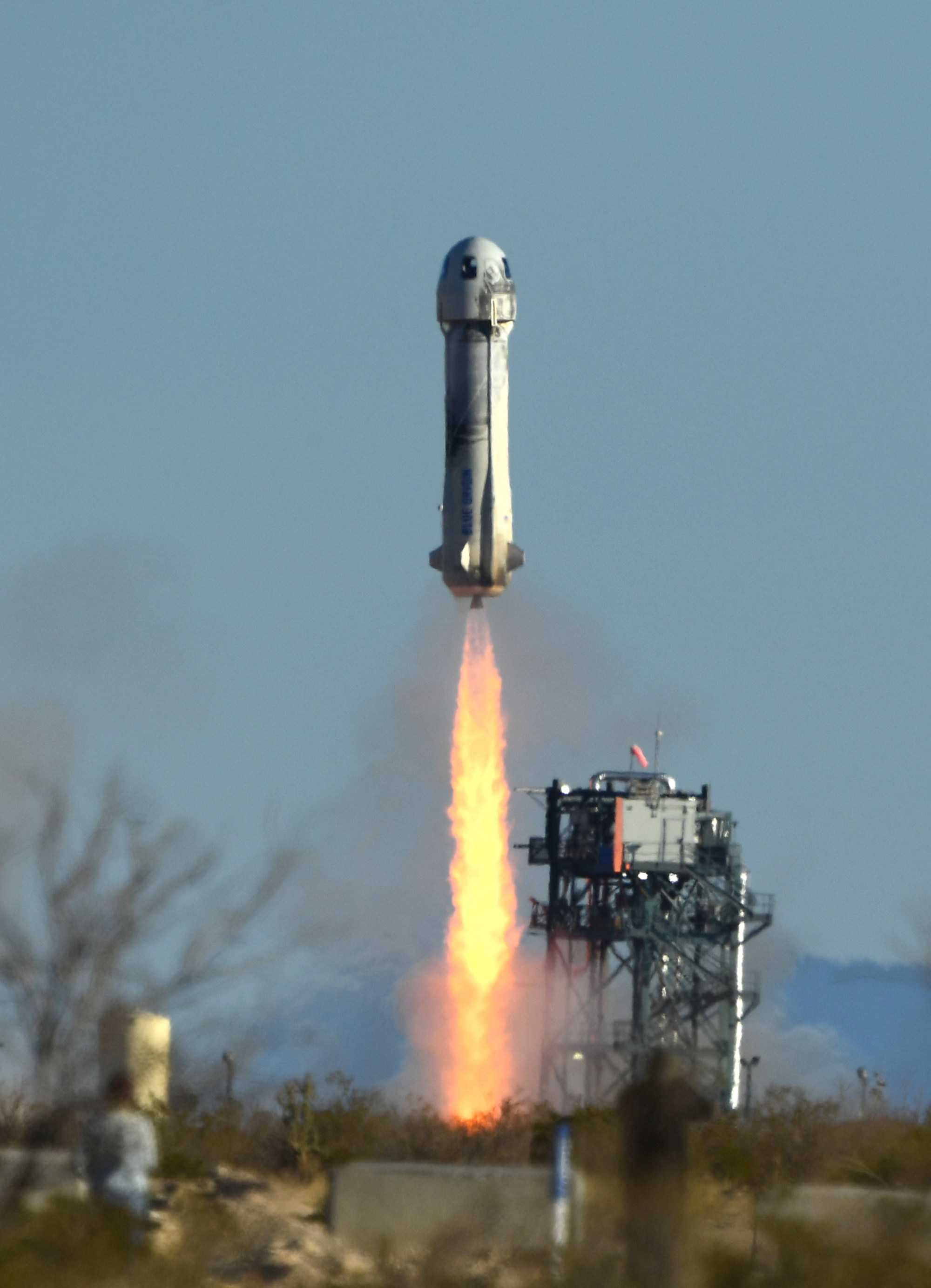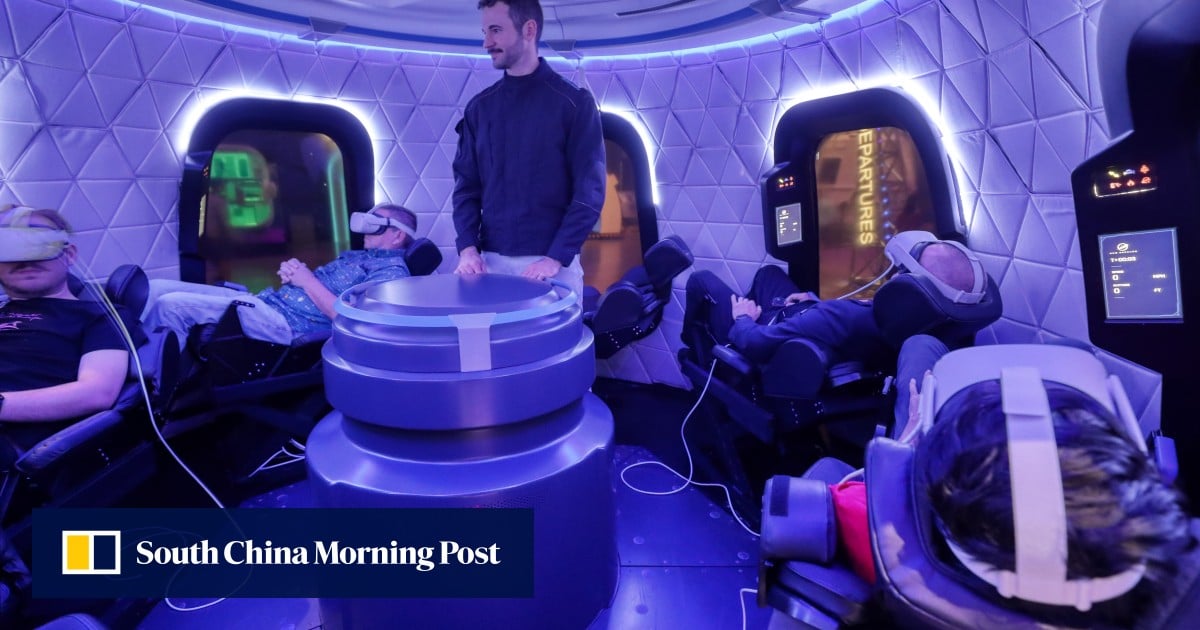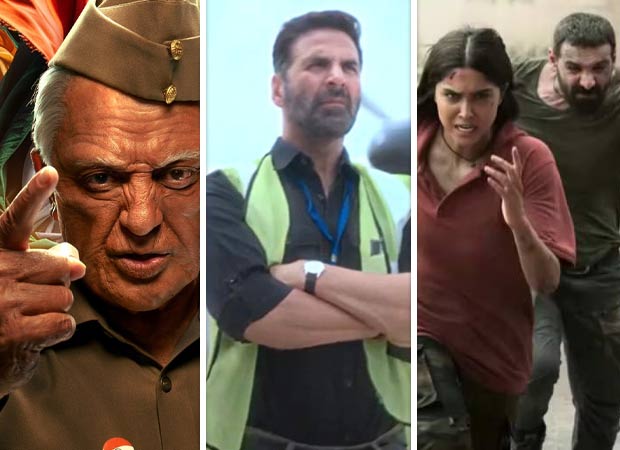The simulator opened recently alongside a special box for people to participate in the Postcards to Space programme run by Blue Origin’s not-for-profit Club for the Future. Guests can drop in a postcard to be flown on a future New Shepard flight that will be sent back to them in the mail.
“The way it works is you go inside, you sit in the seats which are identical to our actual flight seats,” said Schlegelmilch. “Everything you can see and touch in there is basically identical to the real thing.”
Why Bezos, Branson’s risky adventures aren’t what most wealthy tourists want
Why Bezos, Branson’s risky adventures aren’t what most wealthy tourists want
Unlike in the real thing, which takes up to six people past the Karman line, about 82 miles (130km) high, to experience weightlessness and see the curvature of the Earth, visitors to the Kennedy Space Centre won’t be getting out of their seat.
But they will be distracted during what is a speeded-up, four-minute experience wearing VR headsets, especially by the digital zero-gravity indicators that appear on screen.
Those indicators, little floating objects astronauts take into space to let them know it’s “floating time”, have ranged from Lego bricks to Skittles sweets to an American football taken up by NFL Hall of Famer and Good Morning America’s Michael Strahan when he took the trip in 2021.


On the simulator, riders get to choose from among a mini Saturn V rocket (a retired rocket made by Nasa under the Apollo programme), a space shuttle, a crew capsule or a tennis ball, and when the time comes, the simulator makes them appear as if they are floating.
Riders’ virtual hands can flick them across the cabin, and even into one another.
That’s why it’s easy to forget to look out of the window.
The VR headsets are loaded with images taken with 360-degree cameras from previous flights of New Shepard, which launches from Blue Origin’s West Texas facility.


The rocket has flown 23 times but has not taken flight since September 2022, when an uncrewed version of the rocket suffered a malfunctioning booster at lift-off.
The capsule on that flight did what it was supposed to do, activating the emergency escape engines to safely shoot the capsule away from the booster and then land safely nearby, but the booster was destroyed.
The incident forced the US Federal Aviation Administration to ground the rocket for more than a year as Blue Origin concluded its investigation and enacted a series of fixes.

It affected only the uncrewed version of New Shepard, while the capsule and booster that was used for every human space flight remained intact. Blue Origin has manufactured a new booster as well.
“We’ll be flying very soon,” Schlegelmilch said.
Before the incident, New Shepard had from July 2021 to August 2022 flown six successful crewed flights, taking up 31 people, including one who flew on it twice.

The price people have paid has not been announced by Blue Origin.
In March 2022, Marc and Sharon Hagle spent a portion of their free-floating time enjoying the first kiss among private astronauts in space. They plan to return to space when Blue Origin gets back into the business of crewed flights.

While millionaires will continue to be the primary customer base for Blue Origin, the simulator at Kennedy Space Centre opens up the experience to the masses, Schlegelmilch said.
“It’s super exciting to be able to bring an experience like this to a huge range of people who otherwise would have never maybe got a chance to see that,” he said.







